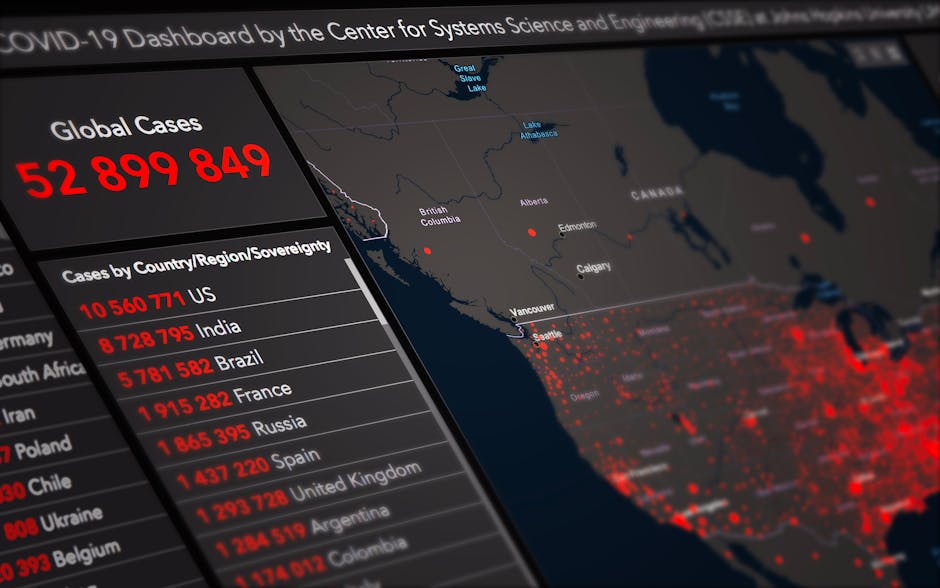Real-World Project Management Case Studies
You’re about to delve into real-world project management case studies that will make you wonder how anyone gets anything done without a solid plan, communication strategy, and risk management skills. From the IT industry’s cybersecurity threats to construction’s site hazards, you’ll see how project managers navigate obstacles and stay ahead of the game. You’ll discover how effective communication, agile methodology, and budgeting strategies can make or break a project. Buckle up and get ready to learn from the successes and failures of real-world project management case studies – and find out what it takes to stay on top of the project management game.
Key Takeaways
• A cloud migration project for a financial institution involved mitigating cybersecurity threats and balancing multiple tasks to avoid catastrophic consequences.• A software development project used agile methodology, with iteration planning and agile coaching, to adapt to changing goalposts and deliver a successful product.• A construction project in a remote area utilised effective communication and stakeholder management to overcome logistical challenges and complete the project on time.• A project manager in the IT industry implemented expense tracking tools and budget allocation plans to ensure financial transparency and minimise waste.• A remote team management project used virtual meeting tools, clear agendas, and team-building strategies to foster a sense of community and connexion amongst team members.
Project Management in IT Industry

You’re probably no stranger to the IT industry’s breakneck pace, where projects can go from zero to ‘OMG, it’s due yesterday!’ in what feels like seconds.
Suddenly, you’re juggling multiple tasks, and your to-do list is longer than a Tolstoi novel. It’s a miracle you still have hair left on your head.
As a project manager in the IT industry, you know that staying ahead of the game means embracing the latest trends.
Cloud migration is all the rage, and for good reason – scalability, flexibility, and cost-effectiveness are just a few perks. But let’s not forget the elephant in the room: cybersecurity threats. One misstep, and your entire operation is compromised.
It’s a formidable task, but someone’s gotta do it.
You’re the conductor of this chaotic orchestra, ensuring that every team member is on the same page.
It’s a delicate balancing act, where one wrong move can have catastrophic consequences. You’re not just managing projects; you’re mitigating risks, anticipating obstacles, and making split-second decisions that can make or break the entire operation.
Overcoming Communication Breakdowns

You’ve been there – stuck in a project that’s going off the rails because nobody’s on the same page.
Communication breakdowns happen, but they don’t have to happen to you.
Clarify Expectations Early
When project timelines are tighter than a Kardashian’s grip on social media, miscommunication can be the silent assassin that takes down even the most well-intentioned teams. You know the drill – you’re on a roll, crushing tasks left and right, when suddenly, someone throws a wrench in the works with a ‘ Wait, I thought we were doing X, not Y!’ face-palm moment.
To avoid this, you need to clarify expectations early and often. It’s like the project management version of ‘measure twice, cut once.’ Make sure you’re on the same page as your stakeholders, or you’ll be dealing with Scope Creep, the ultimate party crasher.
Here’s a quick rundown of what you should cover:
| Stakeholder | Expectations | Deliverables |
|---|---|---|
| Client | Functional website | Fully functional website by launch date |
| Dev Team | Technical requirements | Working prototype by sprint 3 |
| Marketing | Branding guidelines | Brand style guide by end of week 2 |
| Project Manager | Timeline | Gantt chart with milestones |
Regular Progress Updates
Now that you’ve clarified expectations, it’s time to keep the lines of communication open with regular progress updates, because a project without transparency is like a social media influencer without followers – pointless.
You can’t just set it and forget it; you need to keep stakeholders informed every step of the way. That’s where regular status meetings come in.
These shouldn’t be tedious, hour-long affairs, but rather quick, 15-minute cheque-ins to review progress and address any roadblocks.
But, let’s be real, not everyone can make it to those meetings. That’s where project dashboards come in – a visual representation of your project’s status that’s accessible to all.
It’s like a one-stop shop for project updates, and it’s essential for keeping everyone on the same page.
By combining regular status meetings with project dashboards, you’ll confirm that your project stays on track and that communication breakdowns become a thing of the past.
Budgeting and Cost Control Strategies

You’re finally ready to talk turkey – or rather, budget dollars.
Now that you’ve gotten your communication breakdowns under control, it’s time to get real about the benjamins.
You’ll need to master cost estimation methods, create a solid budget allocation plan, and pick the right expense tracking tools to keep your project’s financials from going off the rails.
Cost Estimation Methods
Accurate cost estimation is the project manager’s superpower, as it helps prevent budget blow-outs and guarantees that stakeholders don’t get caught off guard by unexpected expenses. Without a solid grasp on cost estimation, you’re basically playing a game of financial roulette.
There are various cost estimation methods to choose from.
Analogous Estimation: Use the cost of similar past projects to estimate the cost of your current one. It’s like looking at your neighbour’s house to estimate the cost of building your own.
Parametric Estimation: Use statistical models to estimate costs based on historical data. Think of it like using a cost-estimating formula.
Three-Point Estimation: Estimate costs using three different scenarios: optimistic, pessimistic, and most likely. It’s like covering all your bases.
Bottom-Up Estimation: Break down the project into smaller tasks and estimate the cost of each one. It’s like building a cost estimate from the ground up.
Budget Allocation Plans
With your cost estimation skills on point, it’s time to allocate those dollars wisely, and that’s where a solid budget allocation plan comes in – think of it as the roadmap to financial sanity.
Now, you’re probably thinking, ‘What’s the big deal about budget allocation?’ Well, let me tell you, it’s not just about throwing money at tasks and hoping for the best. It’s about strategically allocating resources to maximise ROI and minimise waste. It’s like playing a game of financial Tetris – you gotta fit the pieces together just right.
Here’s a breakdown of how to prioritise your budget:
| Category | Allocation Strategy || Capital Expenditure | Allocate 30% for new equipment and infrastructure || Resource Prioritisation | Allocate 25% for team training and development || Operational Costs | Allocate 20% for daily operations and maintenance || Contingency Funds | Allocate 25% for unexpected expenses and emergencies |
Expense Tracking Tools
Your budget allocation plan is only as good as the tools you use to track expenses – which is why you need to get familiar with the best expense tracking tools on the market, pronto! You can’t just wing it and hope for the best; you need a solid system in place to provide financial transparency and stay on top of your project’s finances.
Some must-haves when it comes to expense tracking tools include:
- Automated expense reporting: because who’s time to manually log every single expense?
- Customisable approval workflows: so you can confirm that only approved expenses make it through
- Real-time expense tracking: because waiting for weeks to see where your money’s going is so last season
- Integrations with accounting software: because seamless is always better than manual
With the right expense tracking tools, you can kiss manual expense reporting goodby and hello to expense automation. It’s time to take your project’s financial management to the next level.
Managing Remote Teams Successfully

Toss out those traditional office boundaries, because managing remote teams is the new normal, and you’re about to navigate the Wild West of virtual collaboration. You’re no longer limited by geographical constraints, but with great power comes great responsibility. How do you keep your remote team engaged, motivated, and productive?
| Virtual Meeting Tips | Team Building Strategies |
|---|---|
| Schedule regular cheque-ins | Host virtual social events |
| Use video conferencing tools | Celebrate milestones and birthdays |
| Set clear agendas and goals | Create a virtual ‘watercooler’ channel |
| Record meetings for reference | Encourage team members to share personal projects |
Virtual meetings are essential for remote teams. You’ll need to master the art of hosting engaging virtual meetings to keep your team on the same page. And, let’s be real, it’s not just about getting work done; it’s about building a sense of community and connexion. That’s where team building strategies come in. By incorporating virtual social events, celebrating milestones, and creating a virtual ‘watercooler’ channel, you can foster a sense of camaraderie and belonging amongst your remote team members.
Risk Management in Construction

You’re about to navigate the minefield of construction risks, where one misstep can blow the entire project to smithereens.
In construction, risks lurk around every corner, waiting to pounce on your project timeline and budget. So, what’re the biggest culprits?
Site hazards: Those pesky trenches, uneven flooring, and exposed wiring can turn your site into a danger zone. Make sure to conduct regular safety audits and provide proper training to your crew.
Material delays: You can’t build a skyscraper without the right materials, folks! Delays in material delivery can bring your project to a grinding halt. Develop a contingency plan for material sourcing and logistics.
Weather woes: Rain, snow, or shine, the weather can be a project manager’s worst enemy. Have a plan B (and C, and D…) for unexpected weather conditions.
Regulatory roadblocks: Permits, licences, and compliance issues can slow you down. Stay on top of regulatory requirements and maintain open communication with local authorities.
Agile Methodology in Practise

Now that you’ve survived the construction risk gauntlet, it’s time to shift gears and get agile – where flexibility is the name of the game and adapting to change is the ultimate superpower.
In the agile world, you’ll find that rigidity is the enemy, and being nimble is the key to success. It’s time to ditch those outdated, rigid project plans and embrace the unknown.
As you embark on agile methodology, you’ll quickly realise that it’s not just about being flexible; it’s about being intentional. That’s where agile coaching comes in – to help you navigate the complexities of iteration planning and guaranty that your team is working in harmony.
Think of it as a symphony conductor, expertly guiding the orchestra to create a masterpiece.
In agile, iteration planning is an art form. It’s about breaking down the project into manageable chunks, prioritising tasks, and continuously refining your approach.
It’s a delicate dance between planning and adapting, where the goalposts are constantly shifting. But don’t worry, with agile coaching, you’ll learn to navigate these twists and turns with ease.
Conclusion
You’ve just navigated a minefield of real-world project management case studies, and made it out the other side with battle scars to prove it.
The IT industry’s communication breakdowns, budgeting landmines, and remote team juggling acts – you’ve dodged them all.
The construction site’s risk management tightrope and agile methodology’s iterative puzzle-solving – you’ve mastered them.
Now, go forth and conquer your own project management frontiers, armed with the wisdom of those who’ve been there, done that, and got the t-shirt.
Contact us to discuss our services now!
